Building a More Resilient World: Salk's campaign for the future
The Institute is embarking on a philanthropic campaign to expand the campus, recruit new researchers and instill added resilience in our bodies and planet.
Jonas Salk showed us the way. Fresh off his victory against polio, Salk came to Torrey Pines Mesa—then mostly deserted—to create a new kind of research institute, where science would be unrestrained by artificial barriers.
Decades before it was fashionable, Salk worried research silos could stunt ideas and collaboration. Salk and architect Louis Kahn designed the Institute accordingly, rejecting departments and even permanent walls between labs. They wanted to create a melting pot of ideas and succeeded spectacularly. The Salk Institute is one of the world’s most prominent biological research institutes, producing six Nobel Prize-winners, multiple FDA-approved drugs, hundreds of patents and thousands of well-cited research papers.
But there is more work to do. The world is facing an array of health-related crises: COVID-19 and other infectious diseases, climate change, neurodegenerative conditions, cancers and many more. These challenges are daunting, but they are also quite solvable.
In recent years, Salk President Rusty Gage has been working with fellow scientists, Institute staff, donors, board members and others to develop a core vision to grow the Institute, remain true to Jonas Salk’s vision and step up to meet these intense health challenges.
The first pillar is refocusing on resilience: the biological adaptability that mitigates the effects of aging, resists disease and restores global wellness. Resilience is a holistic strategy to address multiple diseases, reinvigorating biology to bend when challenged, rather than break.
“We’re talking about building resilience into our systems to create a healthy, responsive immune system and body,” says Gage, who holds the Vi and John Adler Chair for Research on Age-Related Neurodegenerative Disease. “And by doing that, we can prevent disease, or at least delay its onset. It’s not just finding a cause or cure for Alzheimer’s, it’s building a brain chemistry that decreases the probability of ever being affected by the disease in the first place.”
The second pillar is thoughtful growth. The only way to fully meet these challenges is to expand Salk’s faculty, both in size and expertise, recruiting a new generation of biologists, engineers and information theorists to discover new insights and facilitate dynamic collaborations that evolve with the research goals.
The third pillar is expanding the place where it all happens. Before Salk can recruit new scientists, expand current faculty’s research or add cutting-edge tools and technologies, the Institute must grow its current facilities, creating additional space to catalyze discovery.
To achieve that goal, the Institute is launching a five-year philanthropic and scientific campaign. The Campaign for the Future: Building a More Resilient World is an ambitious effort to raise philanthropic support, recruit the best minds in science, advance Salk’s scientific initiatives on climate change, lifelong health, cancer and neurogenerative diseases and build a 100,000-square-foot Center for Science and Technology—the campaign’s focal point.
The new center will house biologists, computer scientists and engineers, along with advanced technologies. This custom-crafted scientific ecosystem is designed to accelerate exploration and transport Jonas Salk’s vision into the next century.
“The Campaign for the Future embodies Salk’s dreams for the Institute and his charge to us to turn those dreams into reality.”
– Martin Hetzer
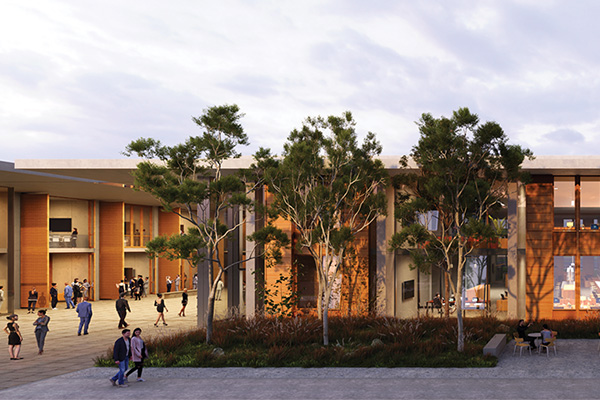
“The Campaign for the Future embodies Salk’s dreams for the Institute and his charge to us to turn those dreams into reality,” says Martin Hetzer, senior vice president and chief science officer. “His quest to improve the lives of humanity, as he did with the polio vaccine, remains at the forefront of our critical mission.”
The Institute has a long history of achieving ambitious goals that advance science worldwide, and this will be no exception. The work has already begun. In fiscal year 2021, Salk donors contributed a record $100 million toward the $500 million campaign goal to expand campus facilities and advance the Institute’s research agenda.
“Jonas Salk was a visionary, and the model he created has served us well: address the most prominent problems; understand the biology at the deepest levels; and bring people together who will work across disciplines,” says Gage. “Our job is to expand on that vision by adding new talent and technologies—ones that Salk could barely have dreamed of in his day—to tackle our most pressing problems.”
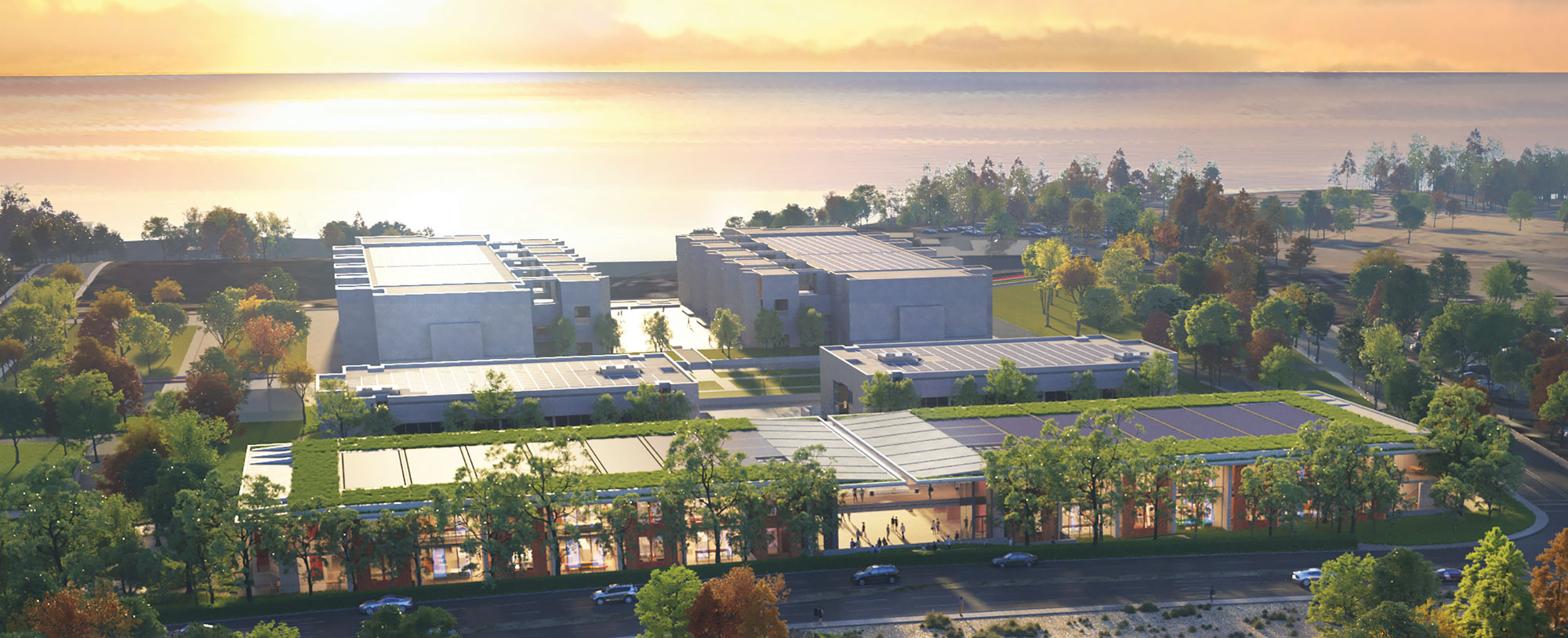
The Road Less Taken
Medical science has made great progress against disease, but for many patients, the clinical reality looks like a game of whack-a-mole: as each new condition crops up, another therapy is added.
Resilience is a more strategic approach. Precisely targeting the right biological pathways, such as aging, inflammation and immunity, can make people less vulnerable. Rather than solely focusing on individual conditions, instilling increased resilience can reduce the overall disease burden.
“We’re collaborating across fields like computational science, neuroscience, cellular biology and more to understand aging and Alzheimer’s so that people can live healthier, longer lives,” says Satchin Panda, professor in the Regulatory Biology Laboratory and Rita and Richard Atkinson Chair. “In one recent collaboration, funded by the Joe and Clara Tsai Foundation’s Human Performance Alliance, we are uncovering how the biological workings of elite athletic performance could inform strategies to boost all people’s resilience and help them live healthier lives.”
Evidence of resilience is all around. Many who contracted COVID-19 were completely asymptomatic. Others have brains full of amyloid plaques, the biological anomalies linked to Alzheimer’s, but never lose cognitive function. This happens over and over—some people are vulnerable to disease, others resilient.
These are not random occurrences. There are biological mechanisms at work that are protecting people. The Institute’s mission is to investigate and understand these systems, identifying the molecular targets that will help instill resilience.
“We are constantly being bombarded with viruses, toxic bacteria and cancerous cells, but we’re usually fine,” says Hetzer. “Our immune system offers a perfect example of how our bodies maintain resilience and what can happen when that resilience is lost. We want to understand the biological changes that create the distinction between robustness and vulnerability.”
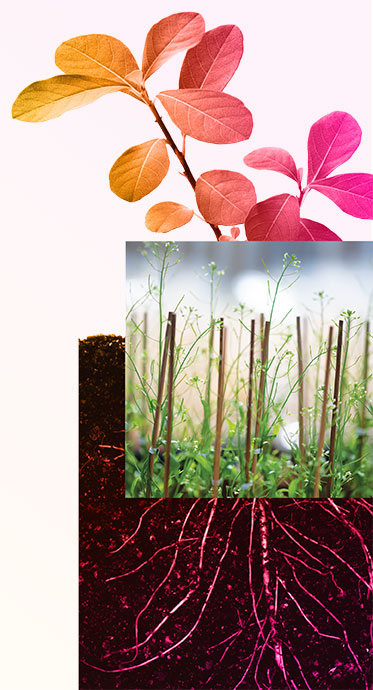
Salk’s Plan to Build Resilience
Plants Cooling a Warming Planet
Global climate change may be the greatest challenge humanity faces. A warming planet is degrading the environment day by day: rising sea levels, catastrophic storms and droughts, waves of extinctions and the migration of novel diseases, such as malaria, dengue fever and West Nile virus. In other words, climate resilience is health resilience.
Climate change is essentially a physics problem. Too much carbon dioxide (CO2) in the atmosphere is warming the globe. People must reduce the CO2 being released and remove what has already accumulated.
Salk is focusing on the second piece. The Harnessing Plants Initiative (HPI) is developing a new generation of crop and wetland plants that capture atmospheric CO2 and hold it underground for decades. The key is molecules like suberin, a carbon-rich polymer found in cork, avocado skins and plant roots. Because suberin is mostly carbon, and resists decomposition, it has tremendous potential to capture and contain CO2.
“Our goal is to have plants do what they do naturally to help solve the world’s climate change, by storing excess carbon from the atmosphere,” says Joanne Chory, HPI co-director, Howard H. and Maryam R. Newman Chair in Plant Biology and Howard Hughes Medical Institute Investigator.
![]()
The Push to Increase Healthy Aging
Aging is hardwired into human biology. And while it is not optional, Salk researchers believe there are ways to mitigate some of its harsher aspects, such as cancer, neurodegenerative conditions, diabetes and infectious diseases. The goal is to increase lifelong health: the number of years people are free from age-related disease.
“What makes a 40-, 50- or 60-year-old successfully maintain health while someone else the same age has a predisposition to some form of disease?” asks Hetzer. “We need to gain a granular understanding of what health really means at different stages in life. And also, we need to understand environmental factors—social interactions, exercise, diet. What role do all these external inputs play in our biological age?”
Through a $19.2 million grant from the American Heart Association-Allen Initiative, Salk scientists are investigating the mechanisms that drive aging and how these can be adjusted to help people maintain resilience. In addition, as referenced above, Panda, and teams from five other organizations, recently received $220 million from the Joe and Clara Tsai Foundation’s Human Performance Alliance to explore healthy aging. For more on aging, read “The Aging Puzzle Comes Together” (see “Frontiers” in Spring 2021 issue).
![]()
The Secrets to Strong Immunity
As the COVID-19 pandemic unfolded, Salk scientists, and many others, noted the important role our immune system played. Some people were infected but completely asymptomatic. In others, the immune response was more dangerous than the pathogen.
Like aging, immunity is a biological switch researchers can toggle to engage resilience. Scientists at the NOMIS Center for Immunobiology and Microbial Pathogenesis are working to understand the mechanisms that keep some people completely asymptomatic—in response to COVID and other conditions—while others end up on respirators.
“If there’s anything the COVID-19 pandemic has taught us, it’s how important basic research is to immunology,” says Susan Kaech, NOMIS Chair and director of the NOMIS Center. “By understanding infectious disease and the immune system, we are aiming to prevent pandemics of the future.”
![]()
Cutting Off Cancer’s Escape Routes
Cancer and aging are part of a shared process. Something happens to the body as it ages that allows tumors to take root. Salk scientists seek to identify and counteract some of the age-associated changes that make it easier for cancers to thrive.
Researchers know that specific gene mutations drive cancer cells’ aberrant growth, but that only tells part of the story. Salk researchers are investigating the mechanisms that help one tumor remain benign for twenty years, while another grows rapidly. Identifying the factors that give some people a resilient tumor response could provide new tools to control that response.
Nearly all tumor cells rewire their metabolisms to change how they take up and use nutrients. Understanding the molecular switches that control metabolic shifts in different cancers has helped Salk researchers develop therapies that cut the fuel lines that help feed malignant cells.
Tumors can also reprogram immune cells to see them as normal tissue and hijack immunity to support their growth and metabolic needs. Immunotherapies, which restore immune cells’ anti-cancer capabilities, have already revolutionized cancer treatment, but they can be quite toxic and don’t serve all patients. Salk investigators are trying to understand the complex relationships between immune cells and tumors to better harness this powerful system.
Salk’s Conquering Cancer Initiative is exploring other strategies: decoding cancer epigenomics to reprogram some cancers back to normal; extinguishing the inflammatory signals that promote tumors; and using computational methods and integrative biology to design novel therapeutic strategies.
“There are hundreds of different cancers and many factors that contribute to each one,” says Salk Cancer Center Director and Professor Reuben Shaw. “That’s why at Salk we bring in so many different disciplines. It’s a complex problem, and we need to level up to meet that complexity. Tumors find ways to escape treatment, and we are going to cut off those escape routes with teams of diverse researchers working together. Salk has become a hotbed for innovative approaches to treat cancers based on what we learn from other disciplines, including aging, metabolic diseases and neurodegenerative diseases.”
“There are disorders, like Alzheimer’s, Parkinson’s and ALS, in which people may have had a genetic predisposition their entire lives. Something changes with age that creates an environment that allows the disease to progress.”
– Nicola Allen
![]()
Finding the Big Picture on Neurodegenerative Diseases
Alzheimer’s research has largely focused on eliminating amyloid plaques and tau tangles, which are thought to drive disease progression. Unfortunately, dozens of drugs have failed in clinical trials.
Focusing on plaques and tangles may miss the bigger picture—the environment within the brain. Again, some people accumulate plaques but never experience neurological decline. Something in their neural environment is keeping them safe.
Salk researchers are working to understand the safeguards that keep people healthy. Specific biological changes are happening that allow Alzheimer’s, Parkinson’s, ALS, multiple sclerosis and other neurodegenerative diseases to take hold. However, there must be ways to reverse those changes and strengthen the neural environment to prevent disease.
“There are disorders, like Alzheimer’s, Parkinson’s and ALS, in which people may have had a genetic predisposition their entire lives,” says Nicola Allen, associate professor in the Molecular Neurobiology Laboratory. “Something changes with age that creates an environment that allows the disease to progress.”
![]()
Using Research Data to Create Solutions
Advances in technology and artificial intelligence is providing new opportunities to approach some of biology’s most challenging problems in new ways.
Deciphering answers from vast amounts of biologic data is shaping the future of discovery. New, high-resolution instruments, such as genomic sequencers and mass spectrometers (which are used to analyze proteins and other molecules), produce overwhelming amounts of data, often measured in terabytes or even petabytes.
To find useful nuggets of information in seas of data, Salk is growing its computational capabilities. Machine learning, and other artificial intelligence techniques, can sort through massive data sets, decipher biological complexity and separate signal from noise. Algorithms are the new microscopy.
“We need people with different skills and from different scientific backgrounds,” says Hetzer. “To understand how plants work, we need chemists, physicists and soil scientists. To understand the human brain, we need computer theorists, geneticists and mathematicians. It’s the only way we’re going to unwind all that complexity and make the information actionable.”
Information theory is the universal language that will help researchers identify the convergence between aging, neurodegenerative diseases, cancer and other conditions and understand the mechanisms that drive cellular health and resilience.
That means recruiting researchers who are thoroughly grounded in computational methods and engineering. These experts will do more than interpret the data; they will help identify, and ultimately harness, the biological mechanisms that drive resilience.
“It helps us become more efficient in using experimental data,” says Tatyana Sharpee, professor in the Computational Neurobiology Laboratory and Edwin K. Hunter Chair. “We can extract more information and answer a lot more questions. If the methods are better, we can pick up weaker signals that we were never able to pick up before and get more answers.”
But this vision goes beyond analyzing data. Cells are constantly making the right decisions: performing their intrinsic functions and responding to environmental changes. There are cellular algorithms driving this precision. Learning how these function could inform better computer systems, which could in turn help answer complex biological questions.
These approaches are parts of a much larger picture. Salk is recruiting computer scientists to better understand how biological systems interact with each other and their surrounding environments, as well as engineers who will collaborate with life scientists and develop new types of instruments that improve how they measure and analyze data. Salk researchers often ask questions that have never been asked before—they need new tools to find those answers.
“We have amazing life scientists here, but most of us were not trained as engineers,” says Eiman Azim, assistant professor in the Molecular Neurobiology Laboratory and William Scandling Developmental Chair. “We frequently need to develop specialized and automated tools for our experiments to advance alongside our rapidly evolving questions and these solutions are often not commercially available. Working alongside talented mechanical and electrical engineers allows us to make prototypes much faster and maintain the pace of our work.”
“Hope lies in dreams, in imagination and in the courage of those who dare to make dreams into reality.”
– Jonas Salk
True to Our Roots
Adding a cutting-edge research facility to the Salk Institute must enhance Salk science and respect the current campus. Louis Kahn’s original architecture is beautiful, functional and iconic. Preserving that breathtaking vista and historic vision is critically important.
As a result, designing the Center for Science and Technology was a thoughtful and iterative process, creating a structure that would meet the Institute’s scientific vision and fit seamlessly into the existing campus. The new facility will replace a parking lot on the eastern corner of the campus and serve as a new main entry for visitors.
The center will mirror Salk and Kahn’s efforts, using teak, travertine, concrete and other materials found in the original structures. The building will offer an expansive and uninterrupted view of the original Courtyard and complement the overall aesthetic.
Built around a large, central courtyard, the center’s spacious and open structure will provide unique opportunities. The Courtyard will offer a meeting place where scientists can discuss new projects and hold scientific meetings, exhibitions, receptions, concerts and other events. Skylights will provide the natural light so essential to health and creativity.
The design, materials and architecture will replicate Salk’s existing look and feel. In addition, the building will house historical exhibits about the Institute. The center will help advance Salk science into the next century and serve as an innovation hub, welcoming others to support the life-changing work being conducted on Torrey Pines Mesa.

Building a Center for Innovation to Drive New Discoveries
When Jonas Salk and Louis Kahn designed the Salk Institute in the early 1960s, they created a new model for the modern laboratory. There are few barriers between labs, and no departments, eliminating silos that isolate both people and ideas. Laboratories were designed to grow as the science dictated.
The Institute has applied this design ethos to the new building. Located on the east side of campus near Torrey Pines Road, this flexible space will provide much-needed growing room to expand Salk’s research capabilities.
Like the original buildings, Salk’s newest facility will be built for versatility, allowing labs to reconfigure quickly and inexpensively, moving walls and lab benches as needed. Research spaces will be designed, and redesigned, to meet each lab’s unique needs and change when the science dictates, just as Salk and Kahn envisioned.
It will provide ample opportunities to add faculty from multiple disciplines and expand interactions between biologists, bioengineers, information theorists and others. The ripple effect will be huge, providing more room for existing labs to expand and bringing off-campus capabilities back to Torrey Pines Mesa.
As has been the case for 60 years, donor support is critical to achieve Salk’s scientific goals. The additional lab space will support recruitment, create greater opportunities for collaboration and help augment critical technologies, such as genomics, bioinformatics and many others.
Most importantly, the new building, and the many changes it will help drive around the Salk campus, will create an even more creative and collaborative environment.
“We’re taking what Jonas Salk taught us and building on that,” says Gage. “Uniting cell biologists, immunologists, geneticists and epigeneticists, neurobiologists, information theorists, engineers and others on nimble teams will multiply the Institute’s capacity to help solve some of the world’s most dire problems.”
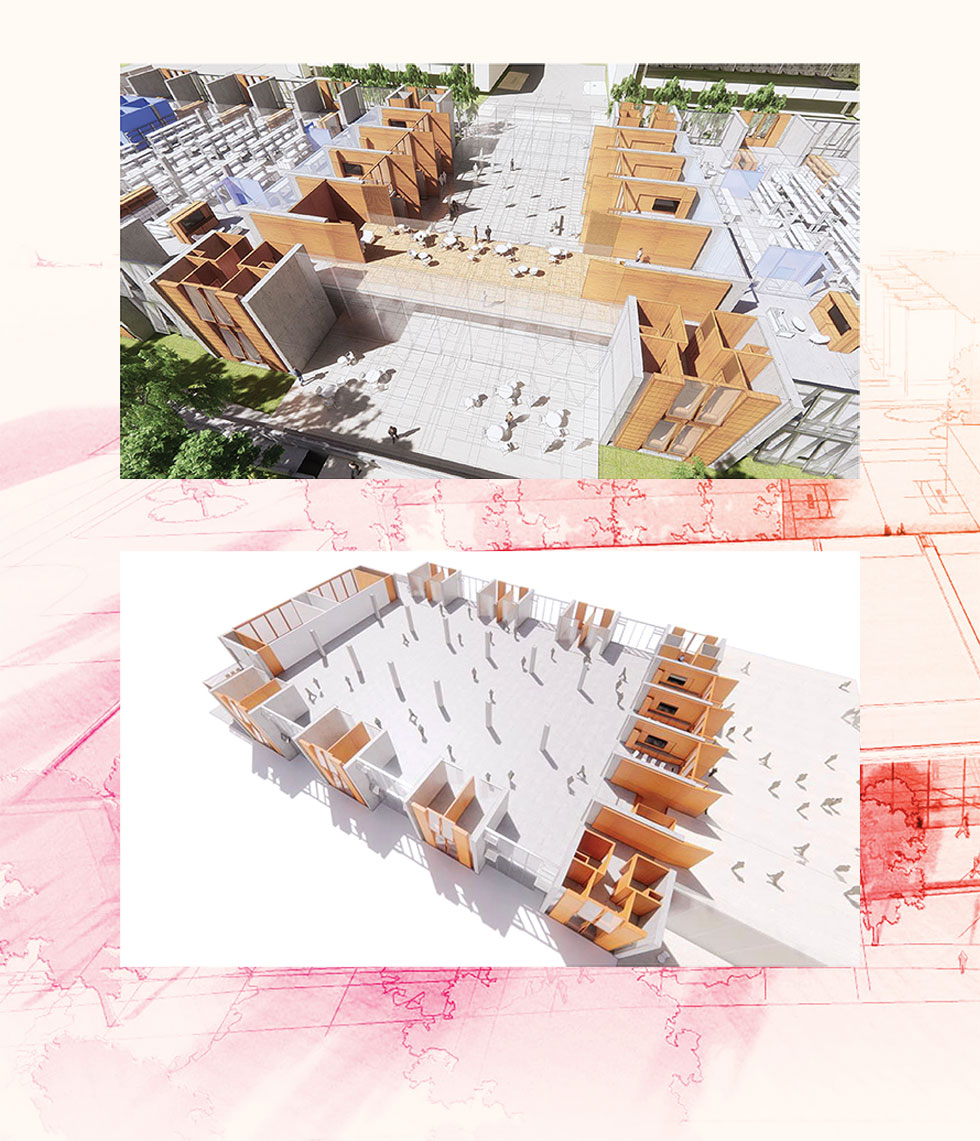
Support a legacy where cures begin.
Featured Stories
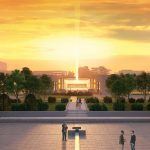 Building a More Resilient WorldThe world is facing an array of health-related crises: COVID-19 and other infectious diseases, climate change, neurodegenerative conditions, cancers and many more. To tackle these daunting challenges, the Institute is embarking on a philanthropic campaign to focus on resilience: the biological adaptability that mitigates the effects of aging, resists disease and restores global wellness.
Building a More Resilient WorldThe world is facing an array of health-related crises: COVID-19 and other infectious diseases, climate change, neurodegenerative conditions, cancers and many more. To tackle these daunting challenges, the Institute is embarking on a philanthropic campaign to focus on resilience: the biological adaptability that mitigates the effects of aging, resists disease and restores global wellness.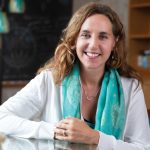 Susan Kaech – How T cells rememberSalk Professor Susan Kaech, director of the NOMIS Center for Immunobiology and Microbial Pathogenesis, has made it her mission to gain a better understanding of how T cells form, how they exchange molecular signals with the surrounding tissue, and how we can use this knowledge to prevent or treat infections.
Susan Kaech – How T cells rememberSalk Professor Susan Kaech, director of the NOMIS Center for Immunobiology and Microbial Pathogenesis, has made it her mission to gain a better understanding of how T cells form, how they exchange molecular signals with the surrounding tissue, and how we can use this knowledge to prevent or treat infections.
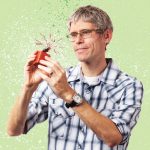 Carl Procko – Lessons from carnivorous plantsStaff Scientist Carl Procko studies Venus flytraps and their close relatives, Sundew plants, to gain insight into the ultra-fast biochemistry of plants and how they can sense touch. It doesn’t hurt that these bug-eating plants are a great way to get kids—and adults—interested in science.
Carl Procko – Lessons from carnivorous plantsStaff Scientist Carl Procko studies Venus flytraps and their close relatives, Sundew plants, to gain insight into the ultra-fast biochemistry of plants and how they can sense touch. It doesn’t hurt that these bug-eating plants are a great way to get kids—and adults—interested in science.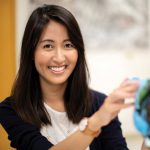 Nuttida Rungratsameetaweemana – Drawing from memoriesNuttida Rungratsameetaweemana, a Salk postdoctoral researcher who studies neuroscience, was introduced to the perplexities of the brain at age 14 during a chance encounter in a hospital waiting room.
Nuttida Rungratsameetaweemana – Drawing from memoriesNuttida Rungratsameetaweemana, a Salk postdoctoral researcher who studies neuroscience, was introduced to the perplexities of the brain at age 14 during a chance encounter in a hospital waiting room.



















































